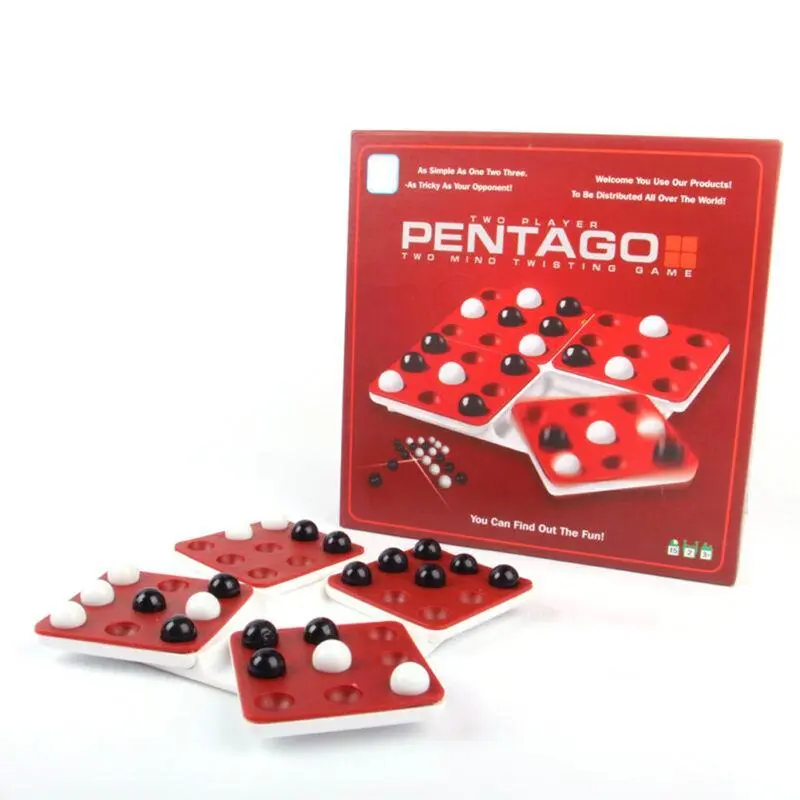Pentago (2005)
Pentago
Pentago is a two-player abstract strategy game invented by Tomas Flodén in 2004. The game is played on a 6×6 board divided into four 3×3 sub-boards, and it has won various awards, including the Game of the Year in Sweden in 2005 and the Mensa Select Award in 2006. The game is developed and sold by Mindtwister.
Why is Pentago Popular?
Pentago is a popular game because it is:
– Easy to learn and understand, making it accessible for players of all ages and skill levels.
– Strategic and challenging, requiring players to think ahead and develop tactics to outsmart their opponents.
– Compact and portable, allowing for quick and convenient gameplay.
– A two-player game, which fosters interaction and competition between players.
Game Components of Pentago
How To Setup Pentago
To set up Pentago, each player chooses a color (white or black) and takes all the marbles of that color. The 6×6 board, composed of four 3×3 sub-boards, is placed in the middle. The game starts with an empty board, and players take turns placing their marbles and rotating the sub-boards.
Gameplay Mechanics and Game Objective
Player Experience
Pentago is a game that appeals to a wide range of players, from children to adults. It is quick to learn but challenging to master, requiring players to think several steps ahead. The game’s unique mechanism of rotating sub-boards keeps players engaged and forces them to adapt their strategies continuously. It is an excellent choice for abstract game nights and can be played multiple times in a row due to its short gameplay duration.
Pros
Cons
Personal Thoughts on Pentago
Pentago is ideal for those who enjoy abstract strategy games and are looking for a game that combines simplicity with depth. It is a great choice for families, as it can be enjoyed by children as young as six, while still offering a challenging experience for adults. The game’s portability and quick gameplay make it perfect for travel or as an opening or closing game for game nights.
We are supported by our audience. When you purchase through links on our site, we may earn an affiliate commission, at no extra cost for you. Learn more.

